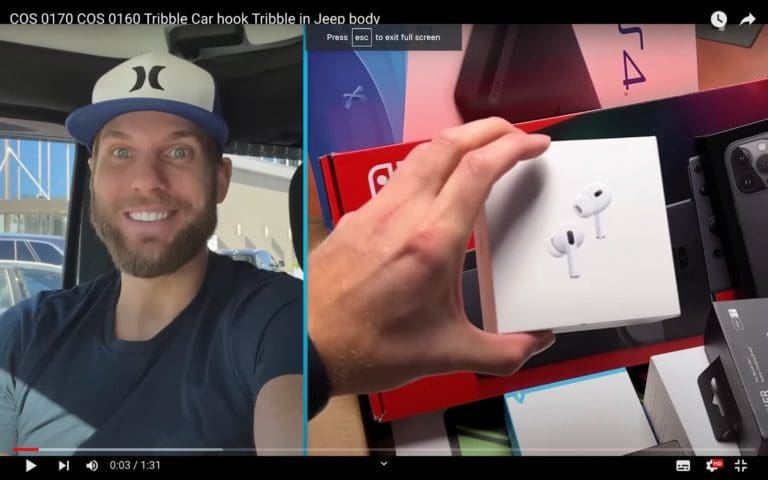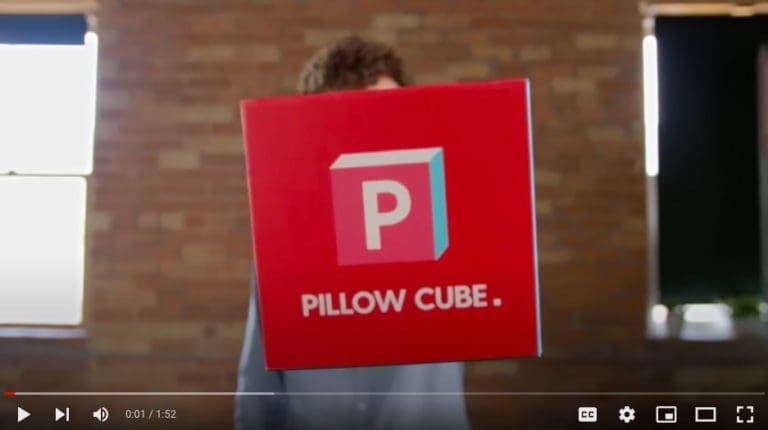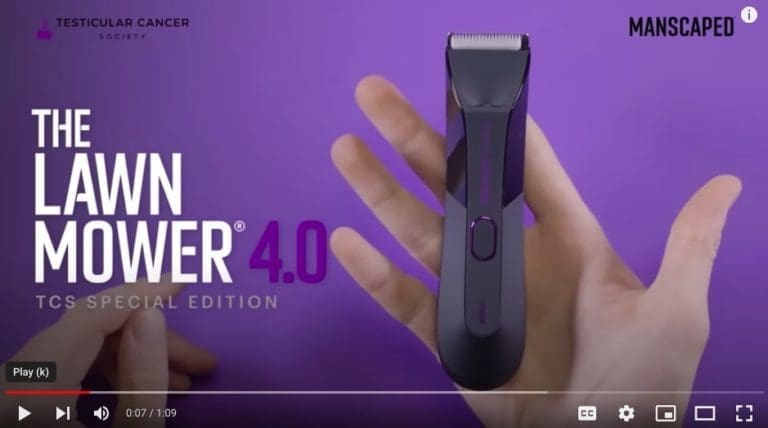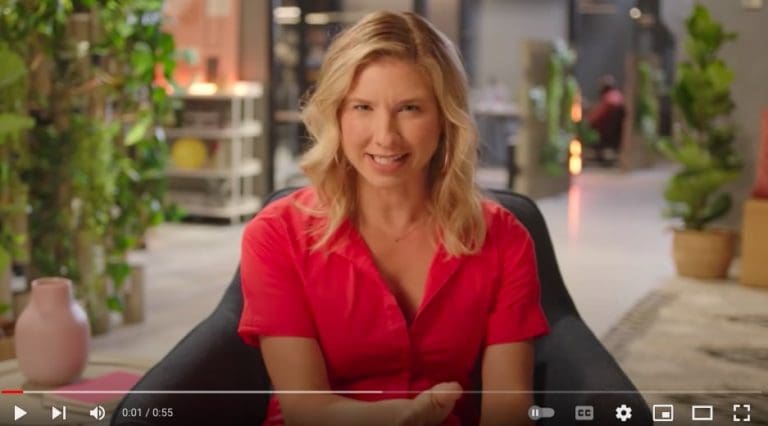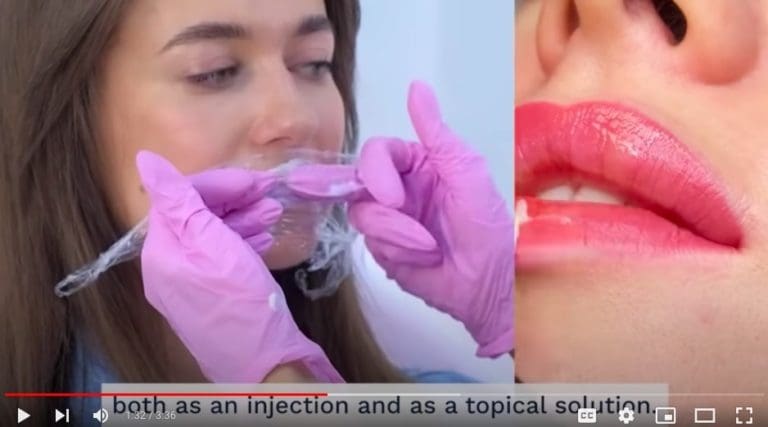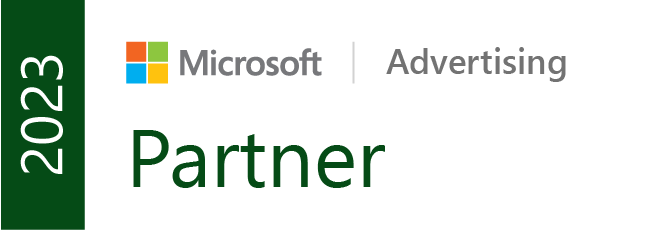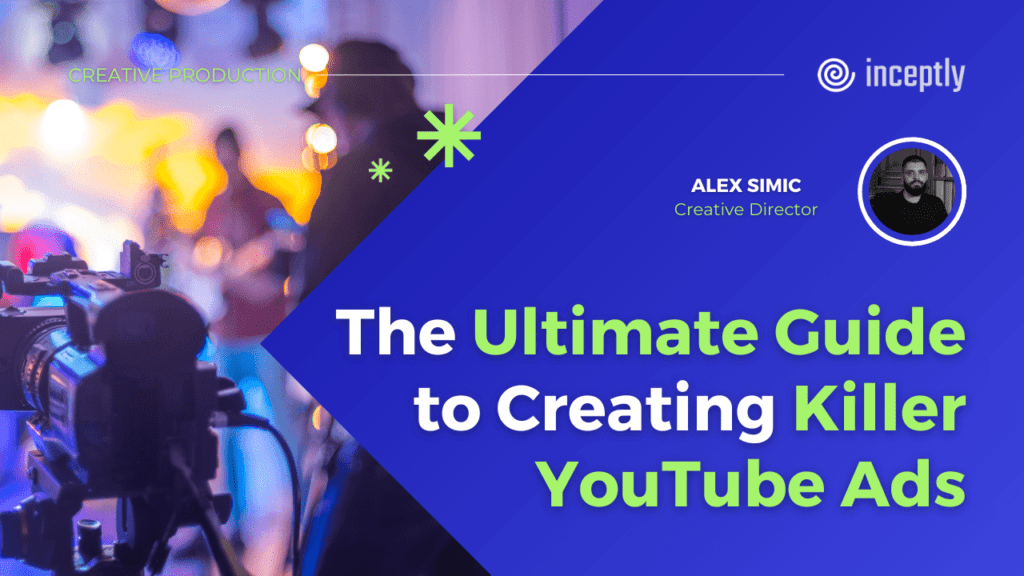
YouTube has become a powerhouse platform for advertising, with its vast reach and engaging content. If you want to leverage the power of YouTube ads to boost your business, you’ve come to the right place.
My name is Alex Simic, and I am a Creative Director at Inceptly – the performance ad team behind $950M+ in direct response revenue. In this comprehensive guide, I’ll walk you through the essential strategies and techniques for creating stand-out YouTube ads that drive results.
Here’s what we are going to discuss:
- Designing attention-grabbing thumbnails and titles
- Crafting compelling video ad copy and visuals
- Case studies and research for high-performing YouTube ad campaigns
- Getting YouTube ads approved and avoiding restrictions
- and much more…
PLUS, we’ll show you examples of how some of today’s top YouTube advertisers are executing each of these.
Let’s dive in…
Want to brainstorm with our team on new ways to scale your business with YouTube Ads (and other performance video platforms)?
Join us for a free YouTube ad brainstorming session by clicking the button below 👇
Understanding YouTube ads
Before diving into the nitty-gritty of creating YouTube ads, let’s first understand the different types of YouTube ad formats relevant to Direct Response Advertising and how they can benefit your business:
- In-stream ads are the most common type of YouTube ad. These ads play before, during, or after a video. They come with a “Skip Ad” button that viewers can use to bypass the ad after a few seconds. In-stream ads are great for generating brand awareness and driving conversions.
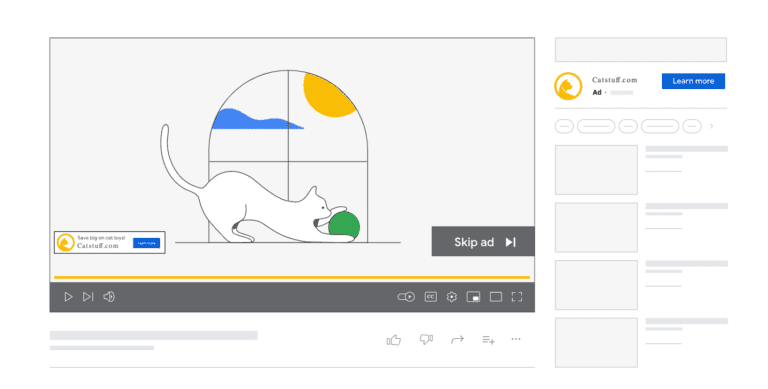
- In-feed ads, also known as discovery ads, appear in the YouTube home feed, search results, and alongside related videos. These ads are native to the YouTube platform and blend seamlessly with the user experience. In-feed ads are highly effective for engaging viewers and driving click-through rates.

There are a lot of variations of video ads and places where video can be utilized on Google properties, but 95% of the time, we will talk about Video Action Campaigns that have these two most frequent formats, excluding YouTube Shorts. Now that we’ve covered the basics of two YouTube ad formats, let’s dive into the strategies for creating compelling YouTube ads that grab attention and drive results.
Designing attention-grabbing thumbnails and titles

When it comes to in-feed ads, thumbnails and titles are crucial for capturing viewers’ attention and enticing them to click. Here are some tips for creating attention-grabbing thumbnails and titles:
- Create visually compelling thumbnails
Use high-resolution images, bold colors, and eye-catching visuals to make your thumbnail stand out amidst the sea of content on YouTube.

- Incorporate text overlays
Add descriptive text overlays to your thumbnails to give viewers a glimpse of what your video is about. Keep the text concise and easy to read.

- Use contrasting colors
Choose colors that contrast with the YouTube interface to make your thumbnail pop. This will help your ad stand out and catch viewers’ attention.

- Test different thumbnail variations
Create multiple thumbnail variations and test them to see which one performs best. Analyze the click-through rates and engagement metrics to identify the most effective thumbnail design, although it’s still not possible to test them at the same time for the same video.
When it comes to titles, keep them concise and compelling. Use powerful words, ask intriguing questions, and highlight the value proposition of your video. A catchy title can make all the difference in getting viewers to click on your ad.
Crafting compelling video ad copy and visuals
Now, let’s move on to the heart of your YouTube ad – the video itself. While there are a lot of ways in which you can efficiently capture your audience’s attention, here are some tips for creating compelling video ad copy and visuals based on some ads that are killing it right now:
- Grab attention in the first few seconds
YouTube viewers have short attention spans, so capturing their attention right from the start is crucial. Use bold visuals, engaging storytelling, or a captivating hook to hook viewers in the first few seconds. The skip button is your worst enemy, so always look at the first 5 seconds of your video and review it from that perspective.
And here is how this ad is doing on Inceptly’s all-new VidTao 2.0 spy tool:
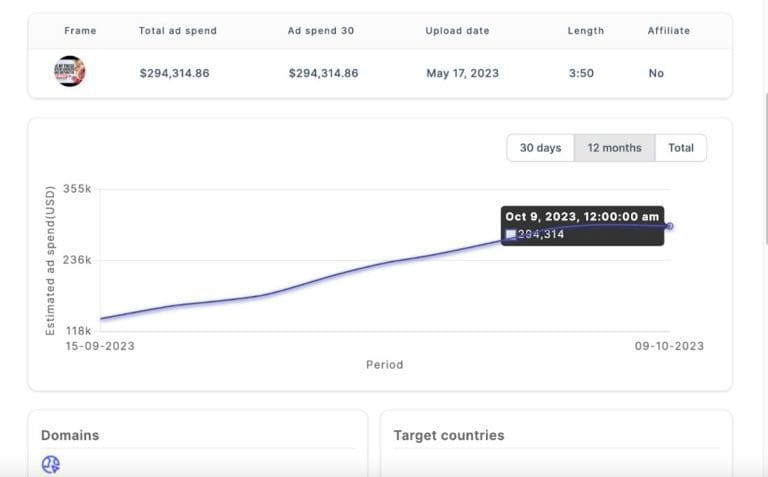
Inside VidTao 2.0 we have we have coverage on Google/YouTube (and soon Facebook also) for over 8 million YouTube ads, and over 65 million search and display ads (plus the landing pages).
🔐 How to access VidTao 2.0
Already a VidTao Premium Member?
As a VidTao Premium Member, you have full access to current VidTao 2.0 features, just go here and log in with your existing info: https://next.vidtao.com
Not yet a VidTao Premium member?
Go here to sign up and save before price increases: 👉 https://vidtao.com/vidtaopremium
This ad taps into a common frustration the customer might have in a straightforward manner – making people stop and watch the rest of the ad since it’s a ‘no-brainer’ for them to do so.
- Keep it concise and focused from the very beginning
The time your viewers will give you is typically short, so make every second of your Hook count. Keep your message concise and focused, highlighting the key benefits of your product or service.
Here is how this ad is doing on VidTao 2.0:
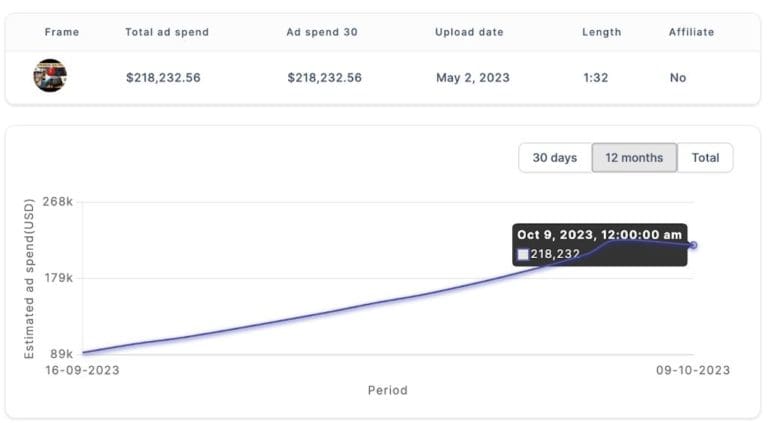
This simple, demonstrational video keeps it very straightforward, and people are aware of the benefits of the product from the very beginning.
- Tell a story
Storytelling is a powerful tool for connecting with viewers on an emotional level. Craft a narrative that resonates with your target audience and showcases how your product or service can solve their problems or improve their lives.
Here are the stats from VidTao 2.0:
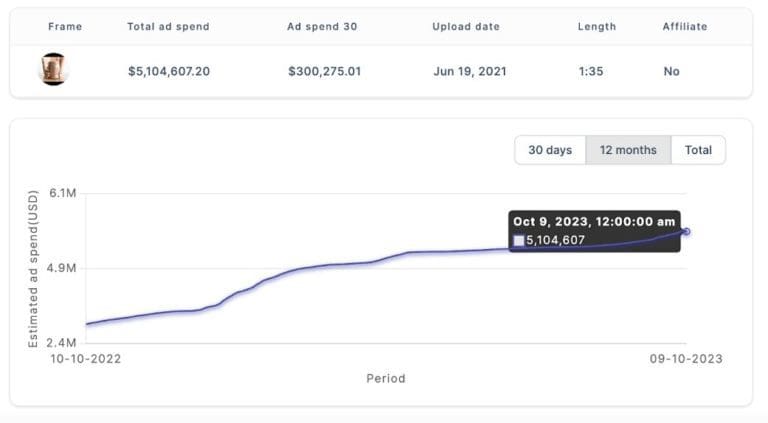
This is an example of perfectly executed storytelling, going into detail about the background of the product’s development, its origins, and what were the ideas behind creating it in the first place.
- Use humor and wit
Injecting humor and wit into your YouTube ads can make them memorable and shareable. However, be mindful of your target audience and ensure the humor aligns with your brand and message.
Here is how this ad is doing on VidTao 2.0:
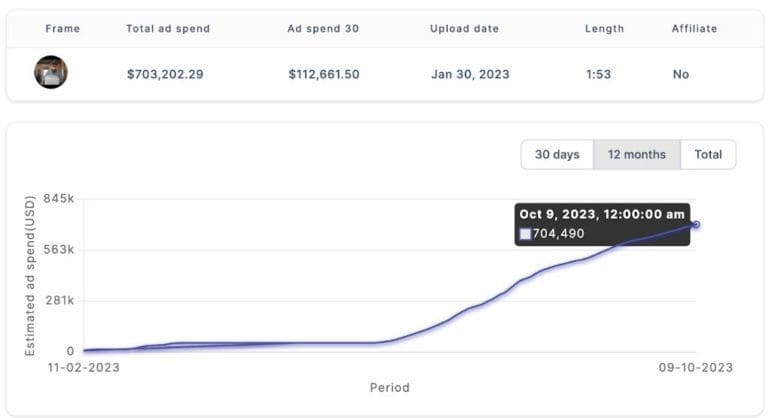
This is a humorous demonstration of a revolutionary product that gets the main benefit of the product presented in a very efficient way.
- Showcase your product or service
Demonstrate how your product or service works and highlight its unique features or benefits. Use visuals and on-screen text to reinforce your message and make it easier for viewers to understand.
Here are the stats from VidTao 2.0:
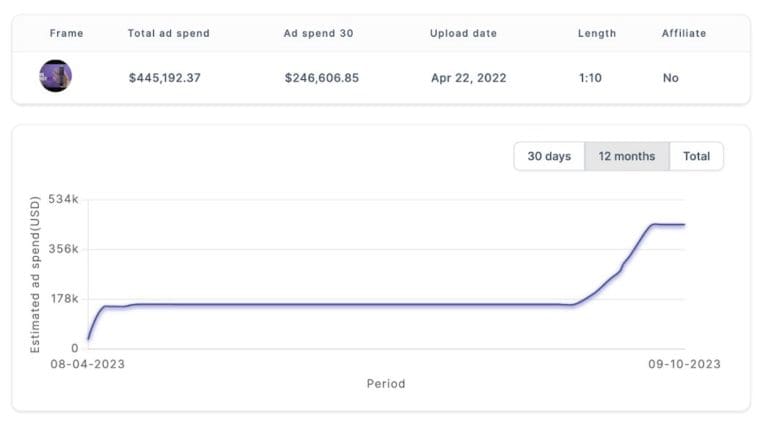
This is a good example of a product showcase combined with a broader relevant message about testicular cancer combined with this demonstration.
Remember to test different video ad variations to see which resonates best with your target audience.
Action Items
TEST THE HOOK
Based on what’s been mentioned so far, you can come to an easy conclusion as to the biggest priority when it comes to creative testing, no matter what stage your account is in. It’s the hook.
- The hook is defined quite vaguely, stretching anywhere from around 5s to 30s, mostly depending on how long your initial video is and how much is revealed in the universal part of your ad. At Inceptly, we tend to call anything shorter than 5s “intros” and anything ranging from 5-30s “hooks,” but keep in mind that others might refer to the same thing with an interchangeable term.
- Sometimes, you will have a successful ad that was never made with the hook + core divide in mind, and it’ll be a challenge to define which part of the intro you want to remove, what you can change, and if you should even do so, or just attach a new intro to the full ad. And my suggestion is – experiment.
- You have to rely on your observations regarding the initial video you’re making changes to but don’t worry. There are tons of videos that you can check out on VidTao whose hooks are pieced together very roughly visual-wise. As long as they’re serving the storytelling purpose and making sense in the broader context of things, you should try it out.
- For in-stream placements, it’s usually around 1%,
- while it’s at around 0.15% when it comes to in-feed placements.
You shouldn’t follow this blindly, but it is a broad guideline, especially if you see a very low number of conversions on the LP but good, above-average CTRs. That is often a sign of a low-converting LP, which should be looked at.
Testing different video ad lengths
When it comes to video ad length, there’s no one-size-fits-all approach. Depending on your target audience, industry, and messaging, different video ad lengths may perform better. Here are some considerations for testing different ad lengths:
- Short-form ads (up to 1-2 minutes)
Short-form ads effectively capture viewers’ attention quickly and deliver a concise message. They work well for products or services with a straightforward value proposition.
Here you can see how this ad is working on VidTao 2.0:
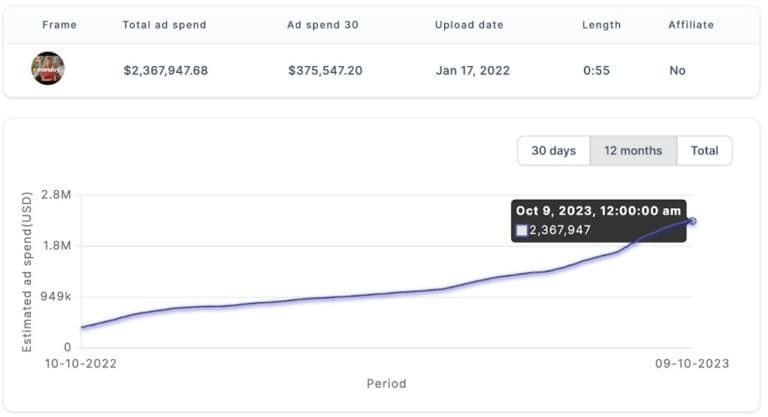
- Mini VSL ads (2-5 minutes)
Long-form ads allow for more in-depth storytelling and can be effective for products or services that require more explanation or have complex value propositions. These ads can engage viewers on a deeper level.
Here are the stats from VidTao 2.0:
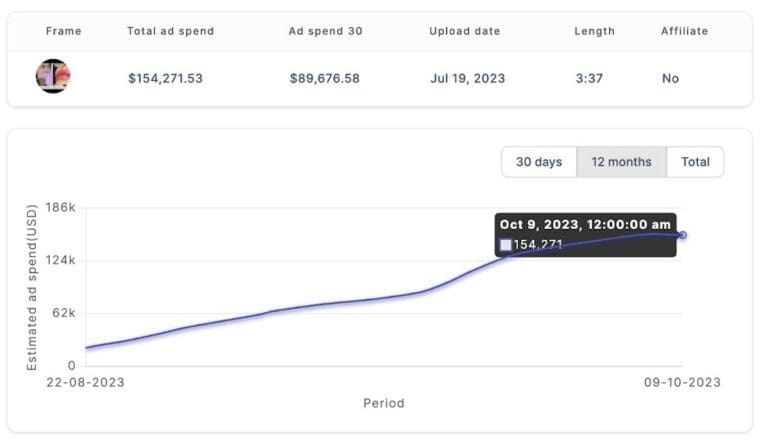
- Long-form ads (5 minutes or more)
This category is mostly dedicated to VSLs or Video Sales Letters. These videos use the principles of sales letters but deliver them in video form. Usually, they are longer than 15 minutes, and most of the ads longer than 5 minutes end up in the 15+ minutes category.
Here is how this ad is doing on VidTao 2.0:
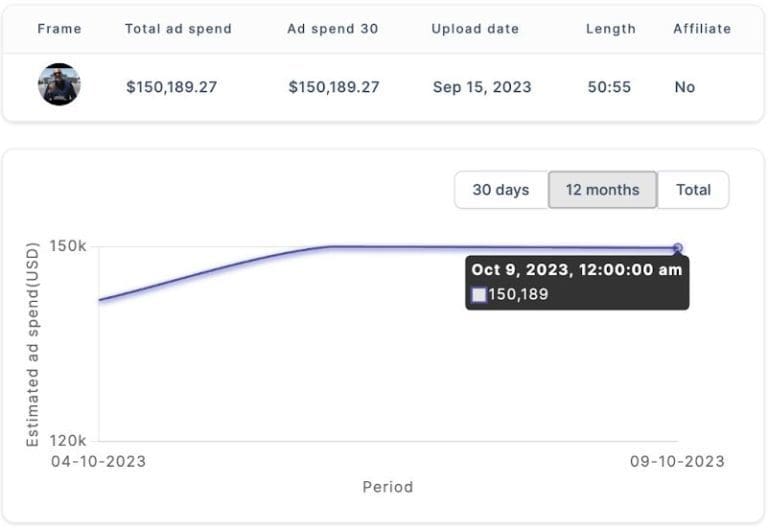
TEST, ANALYZE, OPTIMIZE
As with any aspect of YouTube advertising, it’s crucial to test different ad lengths and analyze the performance metrics. Compare the CTRs, cost of traffic, and conversion rates for different ad lengths to identify the optimal length for your target audience and campaign goals.
Case studies and research for high-performing YouTube ad campaigns
To create high-performing YouTube ad campaigns, learning from successful case studies and conducting thorough research is essential. Here are some resources and strategies to help you:
- Study successful YouTube ad campaigns: Analyze case studies of successful YouTube ad campaigns within your industry or niche. Identify the common elements, strategies, and creative approaches that contributed to their success.
Here are some case studies we have published on our VidTao Blog that you may find valuable reading:
- Leverage VidTao 2.0 for research: VidTao is the spy tool that our agency Inceptly made, and inside it, we have coverage for over 8 million YouTube ads and over 65 million search and display ads on Google/YouTube (and soon Facebook also. Plus, the landing pages. All indexed on the advertiser entity and brand levels). So, VidTao 2.0 is a valuable tool for researching top-performing YouTube ads. Explore it to discover ads with high engagement, conversion rates, and overall success. Take note of these ads’ creative elements, messaging, and targeting strategies.
🔐 P.S. How do you acess VidTao 2.0?
☝️ If you have a VidTao Premium account already?
Go to next.vidtao.com to log in to VidTao 2.0 and try it out.
🙅 …And if you don’t yet have a VidTao Premium account?
Current VidTao Premium members will be “grandfathered in” on the current pricing tier for VidTao 2.0…
…But once we fully launch VidTao 2.0 at the end of the month?
We’ll be raising the price (as you can imagine, we’ve invested A LOT to upgrade the software and continue to add a bunch more amazing features we’ll be walking through over the next few days).
Go here to lock in current pricing & claim your VidTao Premium membership with VidTao 2.0 access: 👉 https://vidtao.com/vidtaopremium
- Conduct audience research: Understanding your target audience is crucial for creating effective YouTube ads. Conduct market research, analyze customer demographics, and gather insights into their preferences, pain points, and motivations. This information will help you tailor your ad content to resonate with your audience. To help you better understand this process, I’m giving you free access to an onboarding form we created for Inceptly’s clients who arrive.
- Test and optimize: Once you have gathered insights from case studies and research, apply those learnings to your YouTube ad campaigns. Test different creative approaches, targeting strategies, and messaging to identify what resonates best with your specific audience. Let me show you how we do that at Inceptly:
TESTING LOGIC
1 / Clearly communicate to the client that the first 2 weeks to a month are the testing phase in which our ultimate goal is to find the best/winning video. Based on the required CPA, in agreement with the client, we decide how much to spend per video.
For example:
- if tCPA is below 100 = $700
- if the required CPA is above 100 = $1000
2 / Depending on the number of videos we have, we do the tests through experiments where we test two-by-two videos on pre-arranged audiences.
3 / We start the test with 3-5 top audience targeting options within one campaign in the first experiment. After the first experiment, we chose the best targeting options for further testing.
4 / We choose the audience based on the data collected so far (Google Ads, analytics, insights) or in consultation with the client about previously winning audiences on other funnels.
RUNNING A TEST
1 / Launch experiment with two-by-two videos on pre-arranged audiences,
2 / Run the experiment for 4-6 days (until the arranged budget is spent):
- If we have a video with a CPA below the target (at least by $20-30) → scale – while scaling, we test new audiences,
- If the CPA is $10-30 higher than requested → we will be doing an improved version
- If the CPA is $30+ over the target but has a good CTR → test other landers or look for changes to the existing one
- If the CPA is below target or around the target → ask a creative team to reframe the versions of that “winning” ad
MUST HAVES FOR TESTING
0 / Research Planner
1 / Video ad
2 / Landing page
3 / Conversion tracking, UTMs
4 / Logo and banner on YT channel
5 / Thumbnail
6 / Copy (headlines, CTAs, descriptions, video title)
7 / Budget and tCPA/tROAS
8 / Approval from the client for all the above
Identifying target audiences for new campaigns

Identifying your target audience is a crucial step in creating successful YouTube ad campaigns. Here are some strategies to help you pinpoint your target audience:
- Define your ideal customer: Start by creating a detailed buyer persona that represents your ideal customer. Consider demographics, interests, pain points, and motivations. This will help you understand who your ads should target (the research questions we shared above can help you with this process ☝️)
- Conduct market research: Study your industry and competitors to understand the target audience’s preferences and behaviors. Identify any gaps or underserved segments that you can target with your YouTube ads.
- Leverage YouTube’s targeting options: YouTube offers various targeting options, including demographics, interests, and custom audiences, among others. Utilize these targeting options to reach your desired audience effectively. Google offers insights based on your existing audience’s preferences, showing which audiences will be more likely to convert.
Here’s an example of some of the audiences Google recommends for one offer we are running.

If you don’t know how to get there, follow these steps:
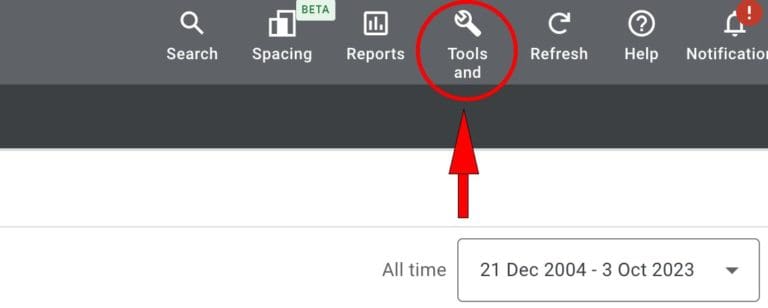
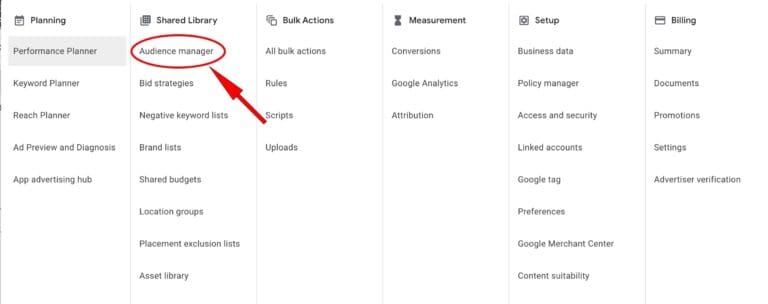

Test and refine: As with any marketing campaign, testing and refinement are key. Experiment with different targeting options and analyze the performance metrics to identify your YouTube ads’ most effective audience segments.
By understanding your target audience and tailoring your YouTube ads to their preferences and needs, you can maximize engagement, conversions, and overall campaign success.
Dealing with COMPLIANCE: Getting YouTube ads approved and avoiding restrictions
To ensure that your YouTube ads get approved and avoid any restrictions, it’s important to adhere to YouTube’s policies and guidelines. Here are some tips to help you navigate the approval process:
- Familiarize yourself with YouTube’s ad policies: Review YouTube’s ad policies thoroughly to understand the types of content, products, and services that are allowed or prohibited. Ensure that your ad complies with these policies to avoid rejection or restrictions.
- Create ads that align with YouTube’s community guidelines: YouTube’s community guidelines outline the types of content that are acceptable on the platform. Ensure that your ad content adheres to these guidelines to maintain a positive user experience and avoid any penalties.
- Avoid controversial or sensitive topics: Steer clear of controversial or sensitive topics that may be deemed inappropriate for advertising. Keep your messaging positive, inclusive, and respectful.
- Use appropriate language and visuals: Be mindful of the language and visuals used in your ads. Avoid offensive or discriminatory content, and ensure that your visuals are appropriate for all audiences.
- Check your ad before launching: Before submitting your ad for approval, review it thoroughly to ensure it meets YouTube’s guidelines. Check for any potential issues with the content, visuals, or messaging.
The best way to deal with compliance is to have an expert team who is experienced in managing common compliance pitfalls AND has person-to-person contact with the right Google personnel, which we have at Inceptly after managing over $200 million USD on Google.
Want to see if we can help you navigate the tricky compliance landscape?
Click here to set up a brainstorming call with our team: 👇
By following these guidelines and creating ads that align with YouTube’s policies, you can increase the chances of your ads getting approved and avoid any restrictions or penalties.
TL;DR
Creating killer YouTube ads requires creativity, a strategy based on data, and adherence to YouTube’s policies.
Remember, you can create YouTube ads that stand out from the crowd and drive impressive results for your business by:
- leveraging attention-grabbing thumbnails and titles,
- crafting compelling video ad copy and visuals,
- testing different ad lengths,
- conducting thorough research,
- identifying target audiences,
- constantly reviewing data that arrives at Google Ads
- and navigating the approval process.
So, it’s time to unleash the power of YouTube advertising and take your marketing efforts to new heights. Get ready to captivate your audience, boost your brand, and achieve your business goals with killer YouTube ads!

Alex Simic, Creative Director
Alex is the person responsible for all creative work that stands behind Inceptly since stepping into his role in 2022. He comes from the role of the Media Buying Team Lead and Strategist behind some of Inceptly’s biggest successes. He has collaborated with the biggest names in the Direct Response industry, whether as a Senior Account Manager & Media Buyer or Creative Director. His main goal is bridging the gap between Media Buying and Creative, ensuring that the videos Inceptly produces are data-based and giving our clients the best chance at achieving success.
Like this post? Let's continue the conversation!
Get in touch with us by shooting us a quick email or tagging us on LinkedIn or Instagram, and sharing your thoughts. Your feedback helps us keep our blog relevant and interesting.
Like the advice but not sure how to implement it? Let us help!
Contact us to discuss avenues for your brand’s growth with performance advertising.
You’ll get an insightful evaluation of your ads + actionable tips to help amp up your direct response revenue. No strings attached!
Get Our Newsletter
Need Help?
Get in touch with us for an insightful evaluation of your ads + actionable tips to help amp up your direct response revenue



